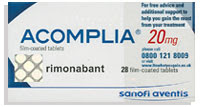she'd observed in a recent party, hosted by a high-profile GP during which he'd invited many pharma reps to his clinic, that almost all of them had brought alcoholic drinks (SAPI-are you listening?) and later went on to shamelessly solicit for business during the continous rounds of drinking. When the GP asked them to drink up, they'd audaciously agreed on condition that sales of a minimum of 100boxes of whatever they are touting will precede.
this sales manager also noted that most of these reps belong to big, established companies and consisted mostly of young, attractive female reps who are not hesistant in flanking the sides of the GP to get his attention amidst the din of the revelry (and debauchery some might add)
so what exactly is it that had incurred her disapproval i queried.
it's the absolute inappropriateness of everything. from the alchohol, to the open solicitation for sales, to the tight white tops the girls were wearing, she adds. since when did we ever had to resort to such overt sexuality to peddle our drugs in the past!? she heaves.
maybe times have changed? perhaps we have become, gasp- old? as for using sex appeal to sell... i do feel that a teeny dose of sex appeal in a subtle manner may enhance the selling process if it is able to get a customer to become more receptive towards a rep. let's face it, the world is full of sexual overtones and sales people in particular, are acutely aware of this, some industries, like banking, have taken full advantage of it to great success, and if one can harness and package it in a sophisticated manner to achieve their end objectives, why not?
however, i do agree that in pharma, an ethical (or percieved) disposition is important. this is because we are dealing with products that is meant to extend and enhance human lives. to embark on a less respectable way of selling would be trivialising this greater purpose.
with millions, billions of dollars poured into providing sales support with clinical trials, adequate marketing and improved processes, it is unnecessary, seemingly wrong even, to consider a need to resort to less savoury methods.
Sure, market is tough, and getting increasingly so. government reimbursements are limited and contentious, lack of product innovations, NCEs are having difficulty getting from bench to bed, reduced consumer confidence in pharma, escalating costs and decreased yield. but with such challenges facing the industry, shouldn't it be bracing together to create a new identity which can propel it into a new era of consumer confidence through ethical r&d, public/patient education, social responsibilty programs, etc
As marketers, we must be careful to ensure that lever spends are being put to greater use than in excessive wining and dining. and if need be, to enforce compliant entertainment practices that is consistent with the brand equity and protective of the corporate image.
And for the less-clued in rep, do give some thoughts to the kind of image you'll like to project and retain in the customer's impression. self-respect and restraint does more good for the soul than incentives can. and if the latter is so important, perhaps you should consider a sales career outside of pharma. the meagre incentives in pharma are hardly worth tolerating the humble doctors' bad jokes, tantrums or idiosynracies














